Brief description

Within the SolSpaces project, a modern and sustainable heating concept for energy-efficient buildings was developed. The central element is a sorption thermal energy store which uses solar thermal energy in summer in order to heat the building in winter. The Institute of Thermodynamics and Thermal Engineering (ITW) of the University of Stuttgart and SchwörerHaus KG were project partners.
Research building
The new heating concept was tested in the innovative “Flying Spaces“ building type from SchwörerHaus KG. These flexible residential buildings are completely prefabricated and are delivered as such by truck. The SolSpaces building covers 43 sqm of living space. Basically, the heating concept is applicable for larger buildings with high thermal insulation standard.
Fig. 1: SolSpaces research building, vacuum tube air collector
Heating concept
The heating of buildings is based on a thermal solar plant in combination with a sorption thermal energy store for seasonal heat storage, integrated into the building’s air ventilation system. Figure 2 shows the three essential operating modes of the solar heating system. Furthermore, a combination of these operating modes is possible as well as ventilation only.
Heating with solar collector: If solar radiation is available during the heating period, air will be heated up by the solar collector (vacuum tube air collector) and used to heat the building.
Heating with sorption thermal energy store (adsorption): If there is not enough solar radiation available, exhaust air will flow through the sorption thermal energy store while the moisture of the air will be adsorbed. This process rejects air which is used to heat the building.
Regeneration of sorption thermal energy store (desorption): in summer, when a surplus of solar radiation is available, air is heated in the solar collector and dries the storage material. Afterwards, the sorption thermal energy store is available again to heat the building.
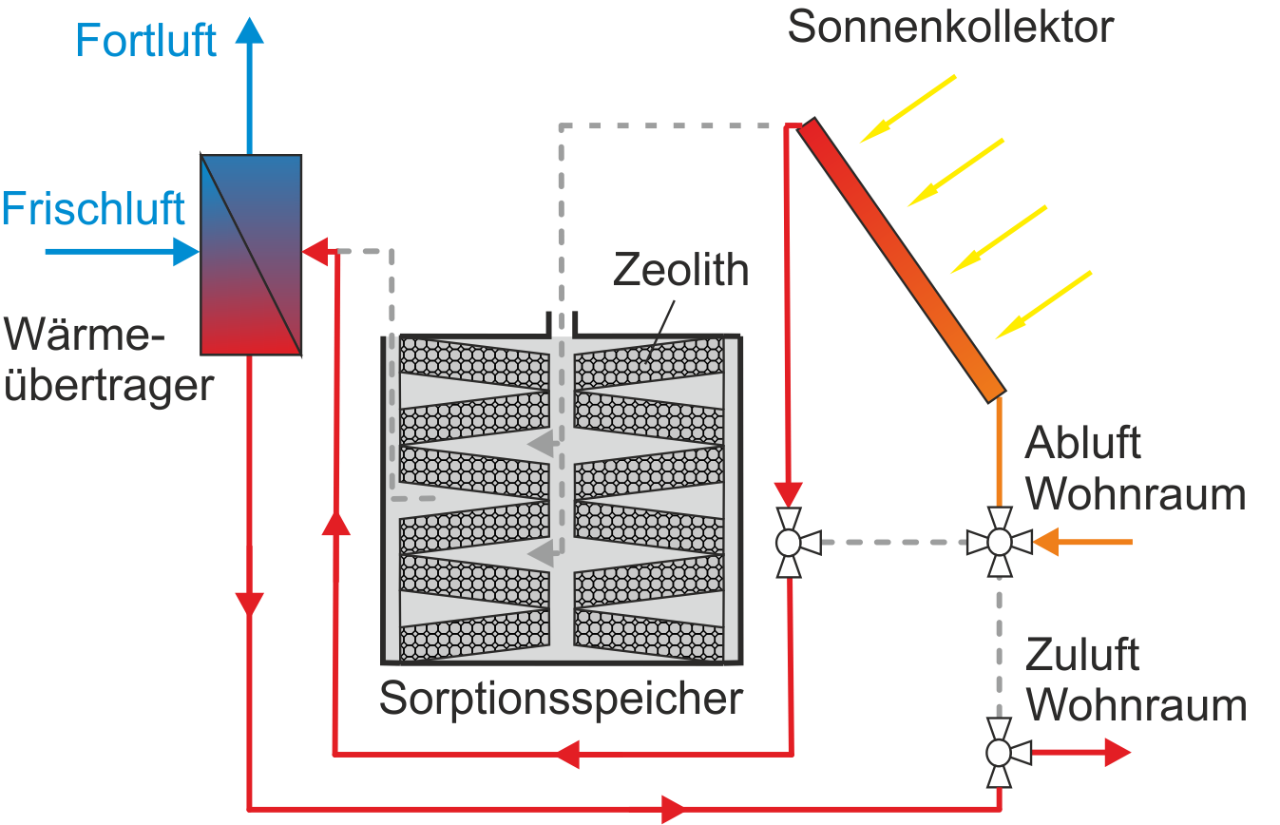
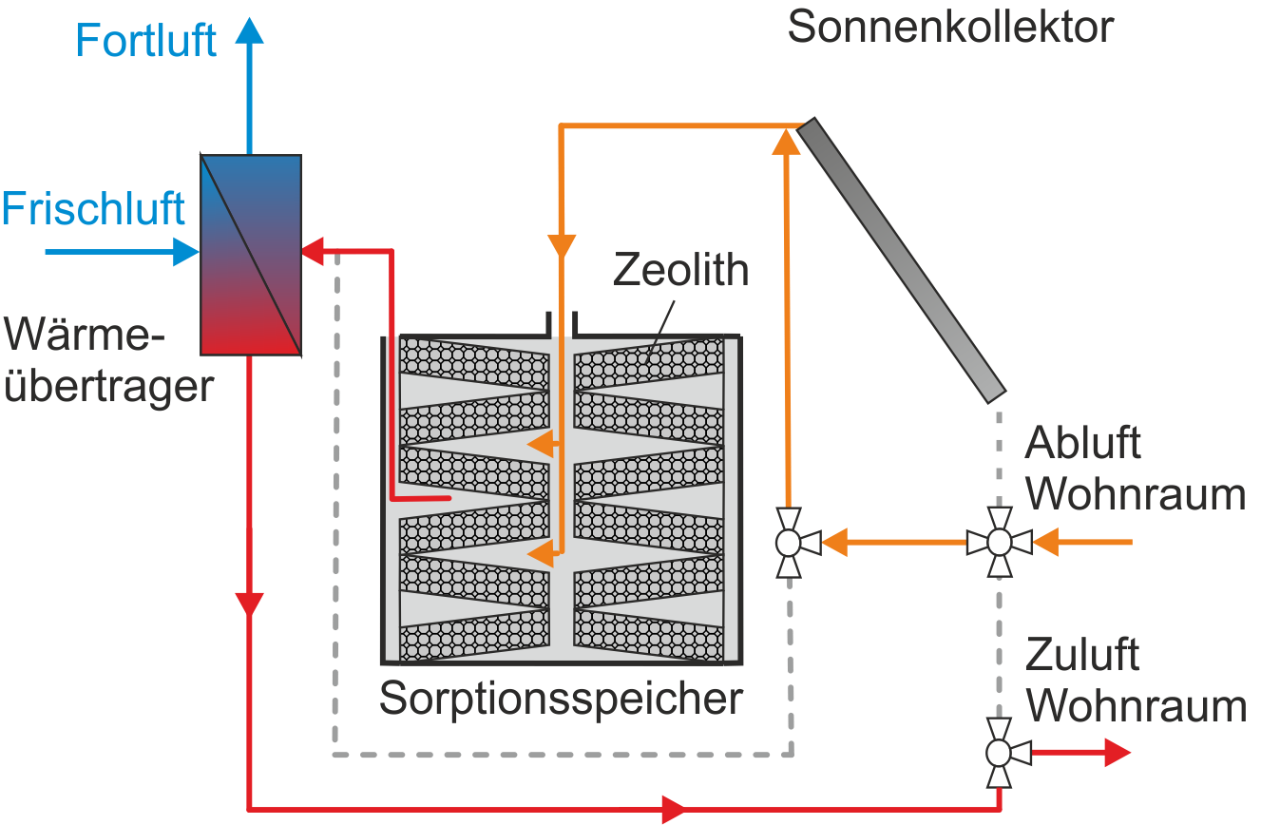
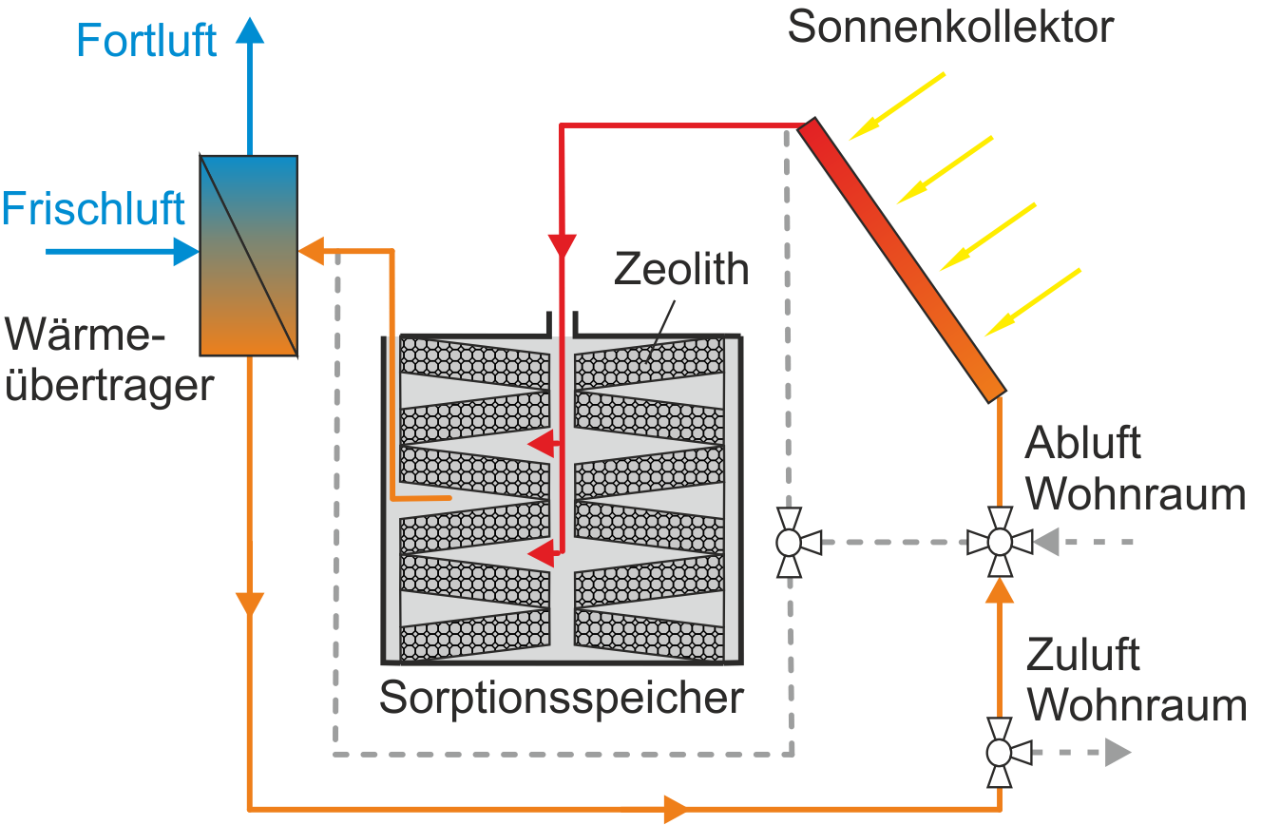
(a) (b) (c)
Fig. 2: Operating modes of the solar heating system: (a) heating with solar collector, (b) heating with sorption thermal energy store (adsorption), (c) regeneration of sorption thermal energy store (desorption)
Sorption thermal energy store
The store works as per the adsorption principle. Adsorption is the attachment of molecules (in this case, water vapor of the air) to a solid’s surface (in this case, zeolite, see also figure 3). Zeolites are highly porous materials with a large inner surface where water molecules can attach. During attachment, thermal energy is released and used for heating purposes. When the storage material is saturated with moisture, it needs to be regenerated (desorbed) and for this purpose, heated up with with hot air.
Adsorption: dry zeolite + water = release of thermal energy + humid zeolite
Desorption: humid zeolite + heat supply = dry zeolite + water
As long as water and zeolite remain separate, energy can be saved as long as desired without any losses. Thus, within the same volume, energy can be stored approx. three times as much as in a storage water heater.
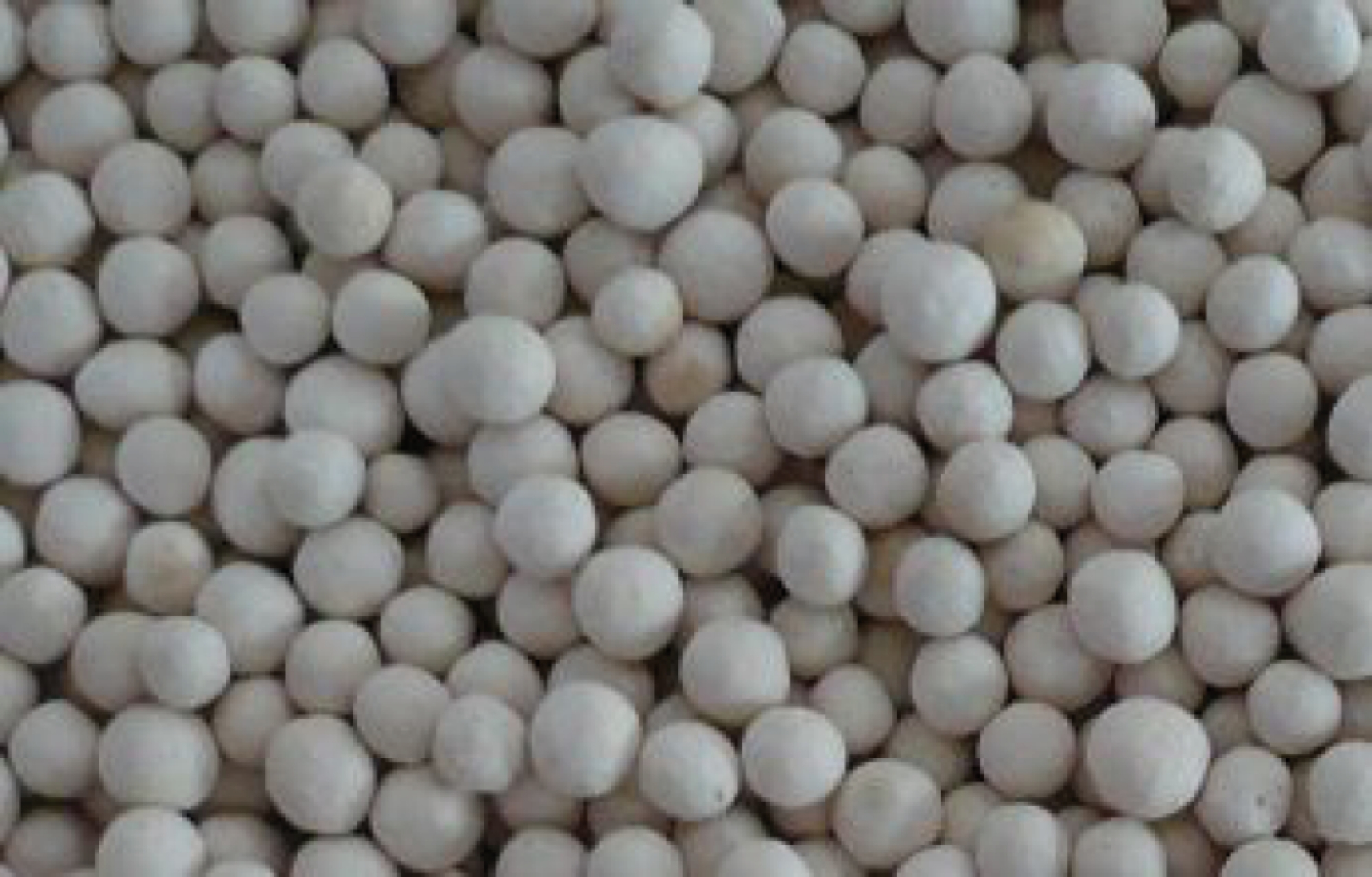
Fig. 3: zeolite as ball-shaped pellets
The special feature of the newly developed sorption thermal energy store is its segmentation, i.e. the partition of the storage volume into several segments. This partition allows for huge material volumes and for this reason, a huge storage capacity. The cubic store is partitioned into four quadrants, each of them made up of horizontally six segments (see figure 4). As a result, there is a total of 24 flat segments with large cross-sections and short bed lengths, achieving a slight pressure loss when air flows through. Always two segments on top of each other form a segment pair where air flows through both segments. Air enters the central inlet duct, flows through a segment pair (as shown on the right in figure 4) and leaves the store again via one out of four exit ducts along the edges of the store.
The sorption thermal energy store in the Solspaces building covers 4.3 cubic meters of sorption material. The theoretical storage capacity is approx. 700 kWh considering the existing boundary conditions.
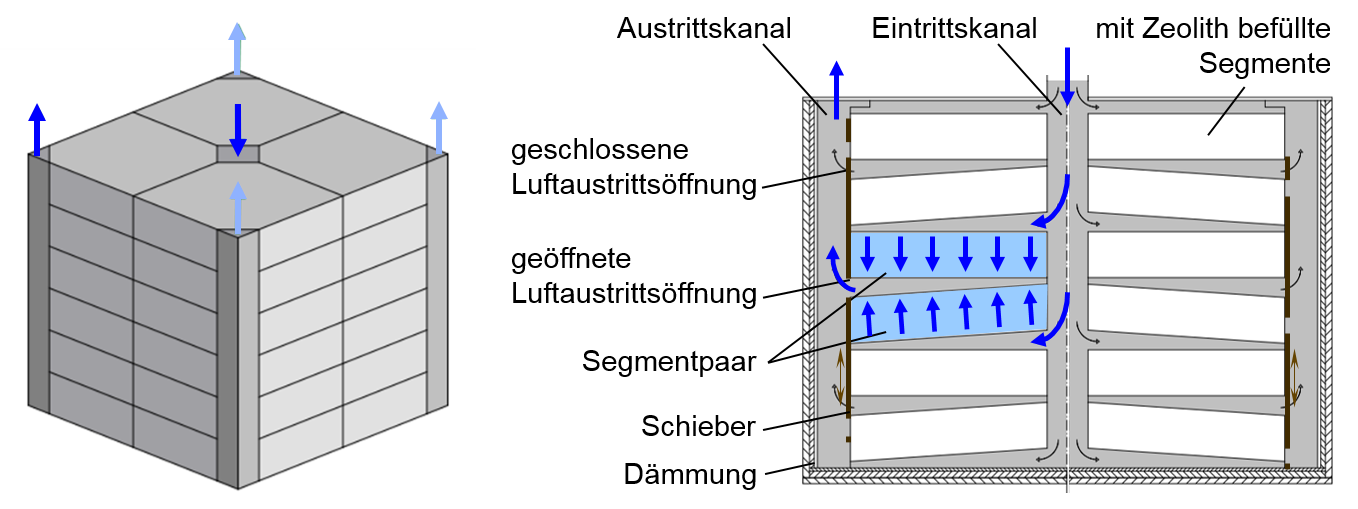
Fig. 4: schematic construction of the newly developed segmented sorption thermal energy store (on the left), vertical cut through the store with through-flow in a segment pair (on the right)
Project phases
In the first project phase, the building initially equipped with conventional heating technology (heat recovery ventilation and compact heat pump) was analyzed with detailed measurements in order to identify the heating demand.
In the second project phase, the vacuum tube air collector and the newly developed sorption thermal energy store were integrated into the building’s ventilation system and the solar heating system was launched. For the first time, the technology of an open sorptive long-term thermal energy storage could be demonstrated under real conditions in a residential building. The investigation with detailed measurements in the heating period 2015/2016 showed that the storage works according to its specifications. The energy balance of the store stated compliance with the expected thermal performance and storage capacity.
The solar heating system will be further developed in the follow-up project SolSpaces 2.0.
Project duration
03/2012 - 02/2016
Project partner
Final report
The final report to this project is available here.
Publications
- H. Kerskes, S. Bonk, R. Weber, H. Drück. Thermochemische Wärmespeicher für PV-Anlagen – Möglichkeiten zur effizienten Nutzung von Solarstrom für die Wärmeversorgung von Gebäuden, OTTI 32. Symposium Photovoltaische Solarenergie, 2017, Bad Staffelstein
- R. Weber, S. Asenbeck, H. Kerskes, H. Drück. SolSpaces – Erprobung eines solaren Heizsystems mit Sorptionswärmespeicher, OTTI 2. Fachforum Green Buildings – Innovative Gebäude und Quartiere mit erneuerbaren Energien, 2016, Frankfurt
- R. Weber, S. Asenbeck, H. Kerskes, R. Jaudas. SolSpaces – Entwicklung und Erprobung einer autarken solaren Wärmeversorgung für energieeffiziente Kompaktgebäude, Abschlussbericht, 2016
- Wärme bis zum Winter speichern, Projekt SolSpaces, BINE Informationsdienst, Energieforschung für die Praxis, 2016
- R. Weber, S. Asenbeck, H. Kerskes, H. Drück, SolSpaces – Testing and performance analysis of a segmented sorption store for solar thermal space heating, Energy Procedia 91 (2016) 250–258
- R. Weber, S. Asenbeck, H. Kerskes, H. Drück. SolSpaces – Konzept und Realisierung eines solaren Heizsystems mit Sorptionswärmespeicher, OTTI Fachforum Energieeffizienzhaus-Plus – Innovative Gebäude mit erneuerbaren Energien, 2015, Hamburg
- R. Weber, O. Barrena, H. Kerskes, H. Drück. SolSpaces – Entwicklung einer vollständig solaren Wärmeversorgung für energieeffiziente Kompaktgebäude – Erste Ergebnisse, Gleisdorf Solar, Tagungsband zur 11. Internationalen Konferenz für solares Heizen und Kühlen, 2014
- H. Kerskes, R. Weber, O. Barrena, H. Drück. Development of a segmented sorption store within the project SolSpaces, EuroSun, International Conference on Solar Energy and Buildings, 2014, Aix-les-Bains
- Die Sommerwärme bis zum Winter speichern, Projekt SolSpaces, BINE Informationsdienst, Energieforschung für die Praxis, 2014
Acknowledgements
The research project ”Solspaces – Development and testing of a complete solar heat supply for energy-efficient compact buildings” was funded by the Federal Ministry for Economic Affairs and Energy and by Project Management Jülich (German: Projektträger Jülich, PtJ) under grant number 0325984. The authors would like to sincerely thank for their support.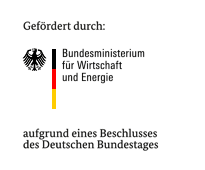

Contact

Dr.-Ing. Henner Kerskes
Team Lead

